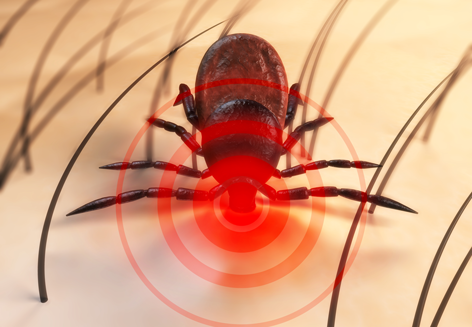ince January, approximately 9800 doctors visit have been registered because of tick bites plus 3600 acute cases of Lyme Disease (LD).
Diagnosing Lyme Disease is a bit of yea or nay game, with some maybe in the middle. Many GPs struggle to differentiate between the chronic and the acute form of LD.
Lyme Disease is an infection caused by the Borrelia Burgdorferi bacteria, which is transmitted through ticks. Diagnosing LD can be easy if a person develops the typical rash in the form of a bull’s eye. The alternative is through laboratory tests.
One of the main problems of the lab test are costs: the test is very elaborate and expensive. Hence serologic diagnostics are preferred to identify IgG and IgM antibodies. If this first test is positive, an immunoblot (also called Western-blot) follows to confirm the diagnose. And it is exactly the interpretation of this immunoblot that can lead into the wrong direction.
An acute form of LD can be diagnosed by observing an increase of the IgG and the IgM antibodies. This means, even if the person shows a suspicious rash on the skin a few days after a tick bite, the blood tests are likely to be negative at this time. This is called a diagnostic window.
If a person shows signs of LD but the antibody test is negative, the antibody test should be repeated within 7 to 30 days. This is how long it can take for the antibodies to become detectable.
Even if the blood test is negative at this point but a patient has definite signs of Lyme Disease, antibiotic treatment is justified. On the other hand, it is also correct to await antibiotic treatment until the blood results are positive. It is not correct to not repeat the antibody test!
These serological antibody tests remain positive for a very long time. This can make the differential diagnosis of a new acute form of Lyme Disease versus signs of an old infection difficult. This is the case regardless of whether a patient remembers a previous tick bite and a diagnose of LD or not.
For these cases, if a patient shows no signs of an acute infection of Lyme disease, he/she should be retested after five to six weeks. It’s changes in the serological antibody test and also in the immunoblot tests that provide an indication for a new infection.
If a patient has non-specific neurological signs and therefore a neuroborreliosis is suspected, a lumbar puncture (spinal tap) is recommended. Parallel to this, the serological blood test is also recommended. The combination of these results is relevant for the diagnosis of a neuroborreliosis. Antibiotic treatment is very successful for neuroborreliosis if started at this point.
In general, antibiotic treatment for Lyme Disease lasts between 10 and 30 days, depending on whether it’s an early or a later stage.
Chronic Lyme Disease is more difficult to treat and usually develops if symptoms were apparent but diagnostics were incomplete or insufficient.
Posted on July 21, 2019 by Luitgard Holzleg
This entry was posted in Blog and tagged antibody, Borreliose, immunoblot, Lyme Disease, neuroborreliosis, Switzerland, tick. Bookmark the permalink.

